Hanoi, the capital of a thousand years of civilization, is not only the political and cultural center of Vietnam but also a witness to the heroic history of the nation.
The two historical battles that are deeply imprinted in the memory of the Capital are the 60 days and nights of the national resistance war (December 19, 1946 - February 17, 1947) and the 12 days and nights of the " Hanoi - Dien Bien Phu in the air" campaign (December 1972). These two events are not only historical milestones, but also symbols of patriotism and the spirit of "determination to die for the Fatherland" of the army and people of Hanoi.
“60 days and nights of fire and smoke” – the heroic song of the army and people of the Capital
In the fall of 1945, after the success of the August Revolution, on September 2, 1945 at Ba Dinh Square, President Ho Chi Minh solemnly read the Declaration of Independence, declaring to all the people and the world the birth of the Democratic Republic of Vietnam (now the Socialist Republic of Vietnam).
After that, President Ho Chi Minh patiently negotiated with France to sign the Preliminary Agreement of March 6 and the Provisional Agreement of September 14 in 1946. But the enemy betrayed and blatantly provoked Vietnam in the South and then tore up the two agreements mentioned above by opening fire and attacking the capital Hanoi on the night of December 19, 1946.
On the night of December 19, President Ho Chi Minh called for the whole country to resist, urging all people to rise up to save the country: “We want peace, we must make concessions. But the more we make concessions, the more the French colonialists encroach because they are determined to take over our country again! No! We would rather sacrifice everything than lose our country, we would rather be slaves… Whoever has a gun will use a gun. Whoever has a sword will use a sword, whoever has no sword will use a hoe, a shovel, or a stick. Everyone must strive to fight against the French colonialists to save the country.”
Responding to President Ho Chi Minh's call, the army and people of the whole country rose up to wage a resistance war against the French colonialists, starting with the fight of the army and people of the capital Hanoi.
The 60 days and nights of fighting (from December 19, 1946 to February 17, 1947) in the heart of Hanoi was the epic opening of the nation's resistance war against French colonialism. The brave soldiers of the Capital Regiment entered the battle to protect the beloved Capital with forces, weapons and equipment that were vastly different from the enemy.
Despite the disadvantages, as it had been predicted in advance, the army and people of the capital were fully prepared for the battle. The neighborhoods and inter-neighborhoods all established teams for medical, supply, intelligence, transportation, evacuation, enemy operations, and teams for the production and repair of weapons and military equipment.
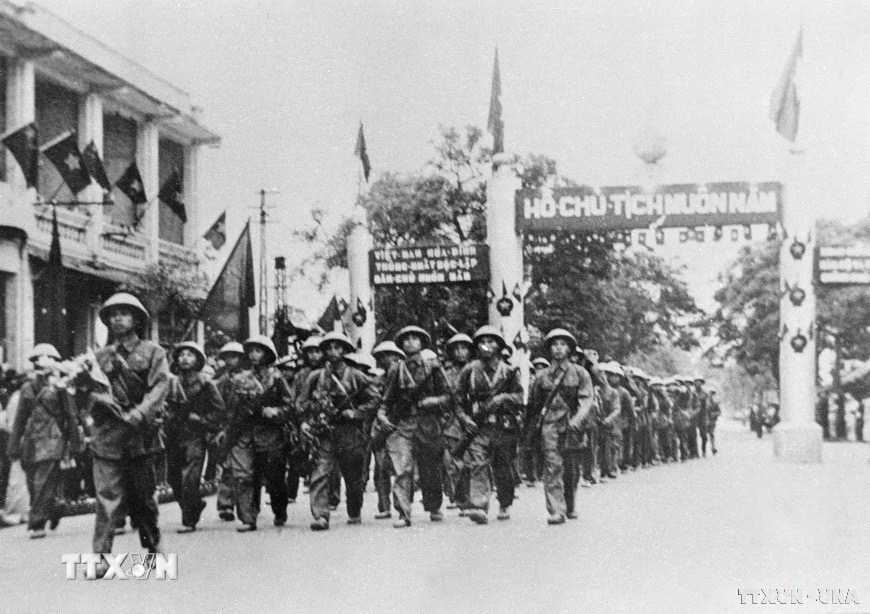
The self-defense units, with the help of local youth, secretly dug fortifications, dug trenches, created obstacles, and formed ramparts at city gates and on the streets to prevent enemy vehicles; drilled holes for shooting, and drilled walls between houses to maneuver in combat. Many families donated all their valuables in their homes such as: rosewood beds, cabinets, sofas, etc. to build ramparts. The National Defense Army, the Suicide Squad, and the militia took an oath with the oath: "To live and die with the Capital," "To die so that the Fatherland can live."
At exactly 8:30 p.m. on December 19, the Yen Phu power plant stopped operating, and all the lights in the city suddenly went out. That was the signal to start the battle of the army and people of Hanoi.
Immediately after the signal was given, from the Lang, Xuan Tao, and Xuan Canh fortresses, our artillery fired at the French positions in Hoang Dieu citadel. At the same time, the police and militia units simultaneously attacked the enemy positions in the city. Everyone, regardless of age, gender, students, teachers, intellectuals, artists, bosses, workers... enthusiastically participated in the resistance to protect the capital.
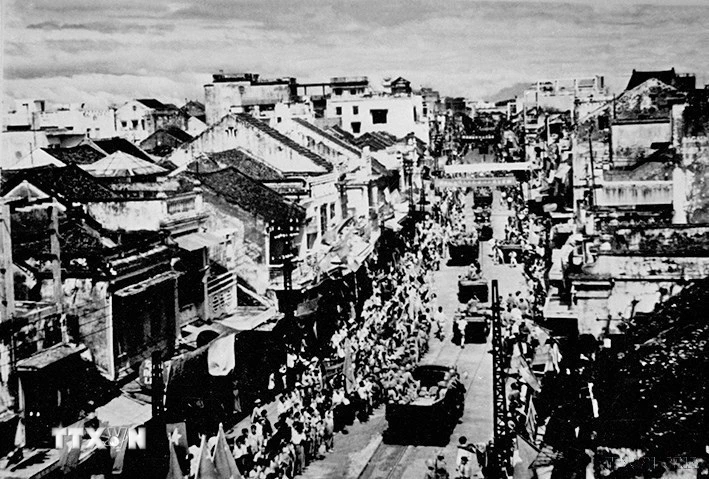
During 60 days and nights, the army and people of Hanoi, with the spirit of "Determination to die for the survival of the Fatherland", fought with the enemy on every roof and street corner. Many battles have gone down in history such as: Battle of Bac Bo Phu (night of December 19, day of December 20, 1946), Battle of Sova house (February 6, 1947), Battle of Dong Xuan market (February 14, 1947)...
In total, in two months, the army and people of Hanoi destroyed over 2,000 enemies, destroyed 53 military vehicles including 22 tanks and armored vehicles, shot down 7 planes, burned 2 canoes... successfully completing the assigned mission, defeating the French colonialists' plot to destroy the headquarters, capture and control the city within 24 hours.
On February 17, 1947, the Capital Regiment, after bravely and steadfastly defending the Capital, withdrew from Hanoi to preserve its forces.
The victory at the Hanoi front had an important effect in encouraging the spirit and morale of the army and people on battlefields nationwide and creating favorable conditions for the whole country to proactively enter the resistance war against French colonialism.
This was also the first victory, opening the way for victories in the long resistance war against the French colonialists of our army and people later.

Besides, the heroic fight of the Capital's army and people for 60 days and nights once again clearly demonstrated "the spirit of our ancestors and the sacred spirit of the mountains and rivers," further brightening the spirit of Thang Long-Dong Do-Hanoi; demonstrating the mettle, intelligence, character, and soul of the Hanoi people: elegant, gallant, peace-loving but also indomitable, indomitable, ready to sacrifice and dedicate everything for the independence and freedom of the nation; representing the tradition of "The whole country fights the enemy, the whole people go to battle" with the spirit of "rather die than be slaves."
The image of the Hanoi suicide soldiers “Determination to die for the survival of the Fatherland” will forever be an immortal symbol of the people's war, in which every citizen is a soldier, ready to sacrifice for the Fatherland; thereby, contributing to igniting the flame of patriotism nationwide, creating a great strength for “Victory will definitely belong to our nation!” as affirmed by President Ho Chi Minh in the Call for National Resistance.
“Hanoi-Dien Bien Phu in the air”: Symbol of Vietnamese revolutionary heroism
In 1954, after the Dien Bien Phu Victory that "resounded throughout the five continents and shook the earth," defeating the invading French colonialists and ending nearly a century of colonial rule, Vietnam continued to enter a long resistance war against the US to save the country.
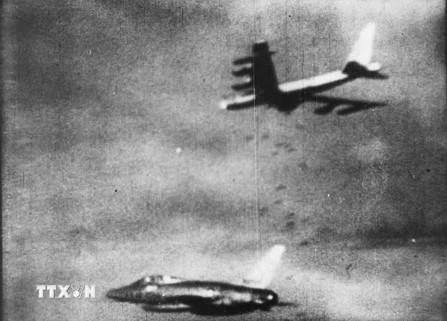
When our people's resistance war against the US to save the country entered a fierce phase, President Ho Chi Minh predicted: "Sooner or later, the US imperialists will send B.52s to attack Hanoi, and only when they lose will they admit defeat. We must anticipate every situation, the sooner the better, to have time to think and prepare. Remember that before losing in Korea, the US imperialists destroyed Pyongyang. In Vietnam, the US will definitely lose, but it will only admit defeat in the sky of Hanoi."
Implementing the direction of President Ho Chi Minh, our army proactively prepared forces, sought creative and suitable ways to fight, built a widespread people's air defense posture across the country, both fighting and providing effective support to the southern battlefield, ready to defeat the US air force when they attacked on a large scale, determined to firmly protect the airspace of the socialist North.
Radar troops and missile troops have promoted the spirit of intelligence and creativity, actively coordinated research and developed ways to fight the B.52. Air Force troops took advantage of day and night to train in flight, practice spirit and combat skills, and skillfully practice the tactic of "secretly approaching, surprise attacking, quickly escaping" to destroy all types of fighter planes, attack planes, command planes, navigation planes, jammers, etc.
The anti-aircraft artillery unit coordinated with the militia and air defense self-defense forces across the country to train and skillfully use a variety of guns, anti-aircraft artillery, including infantry guns, and master tactics. The units promptly assessed the situation, learned from experience on the most effective ways to fight and prevent B.52s, and disseminated them to the entire army and people to minimize losses.
As Uncle Ho predicted, on December 17, 1972, US President Nixon ordered a strategic air raid by B.52 aircraft on Hanoi and Hai Phong. On December 18, 1972, many groups of B.52 aircraft continuously bombed the areas: Noi Bai airport, Dong Anh, Yen Vien, Gia Lam... The fierce fighting of the three-armed air defense force protecting Hanoi opened the historic 12-day and night campaign "Hanoi-Dien Bien Phu in the air".
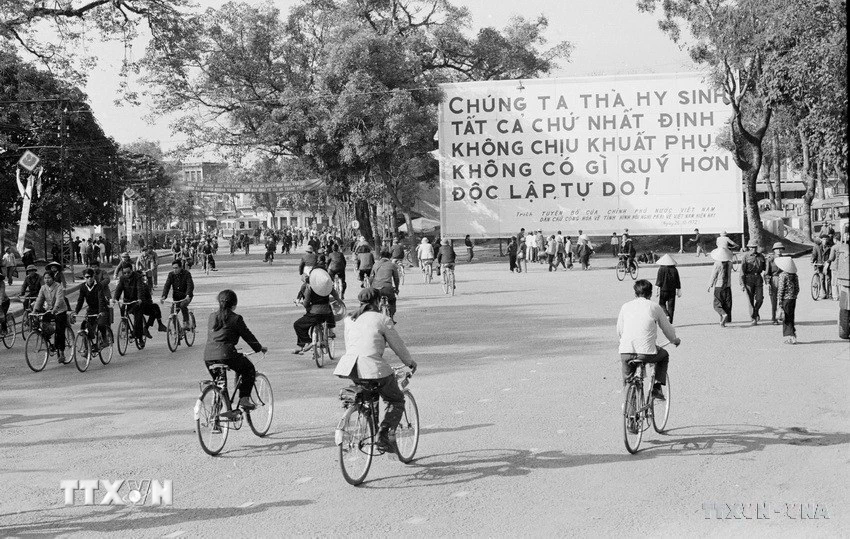
In the following days, the US imperialists mobilized hundreds of B.52 strategic aircraft, along with many tactical aircraft and stealth aircraft... to bomb and shell inner and outer city areas, such as: Voice of Vietnam Radio Station, Sao Vang Rubber Factory, Hang Co Station, Police Department, Yen Phu Power Plant, Ministry of Transport...
In the bitter cold, the army and people of the capital bravely and bravely fought back fiercely. Missile and anti-aircraft artillery positions with the militia and self-defense units of the capital shot down and destroyed many enemy aircraft.
With strong will, faith, courage, intelligence, and creativity, the army and people of Hanoi Capital, together with the army and people of the North, defeated the unprecedented large-scale strategic air raid by the US imperialists, creating the victory of "Hanoi-Dien Bien Phu in the air."
At the end of 12 days and nights of fire and smoke, we shot down 81 planes of all types, including 34 B.52s, smashing the plot of the American imperialists - bringing Hanoi back to the "stone age", writing an immortal epic that shocked the world.
The soldiers of the 3rd Company of the X Anti-Aircraft Artillery Regiment protecting the Capital were intelligent and brave, firing promptly and accurately, contributing to shooting down many American planes. (Photo: VNA file)
To achieve that victory, along with the wise leadership of the Party Central Committee, there was also the determination to fight and win, the self-sacrifice to fight for peace and independence of the Vietnamese people. Contributing significantly to keeping the sky of Hanoi during those fierce days and nights were the fiery battlefields of the Hanoi army and people.
With this historic victory, the US Government had to return to the negotiating table and sign the Paris Agreement, ending the war, restoring peace in Vietnam, and at the same time creating the premise for the General Offensive to completely liberate the South and unify the country in 1975.
Two historic battles – the 60-day resistance war against the French colonialists and the 12-day “Dien Bien Phu in the air” – have been deeply engraved in the memories of Hanoians and the entire Vietnamese people. They are a powerful testament to the strength of solidarity, resilience and undying patriotism.
The 70th anniversary of the Liberation Day of the Capital is an opportunity for us to review, be proud of and be reminded of the lasting values that our ancestors have left. It is also the motivation for today's generation to continue to build and develop the Capital Hanoi into a modern, prosperous city, worthy of the stature of a cultural and historical center of the nation./.
(Vietnam+)
Source: https://www.vietnamplus.vn/khuc-trang-ca-hao-hung-cua-quan-va-dan-thu-do-post981099.vnp




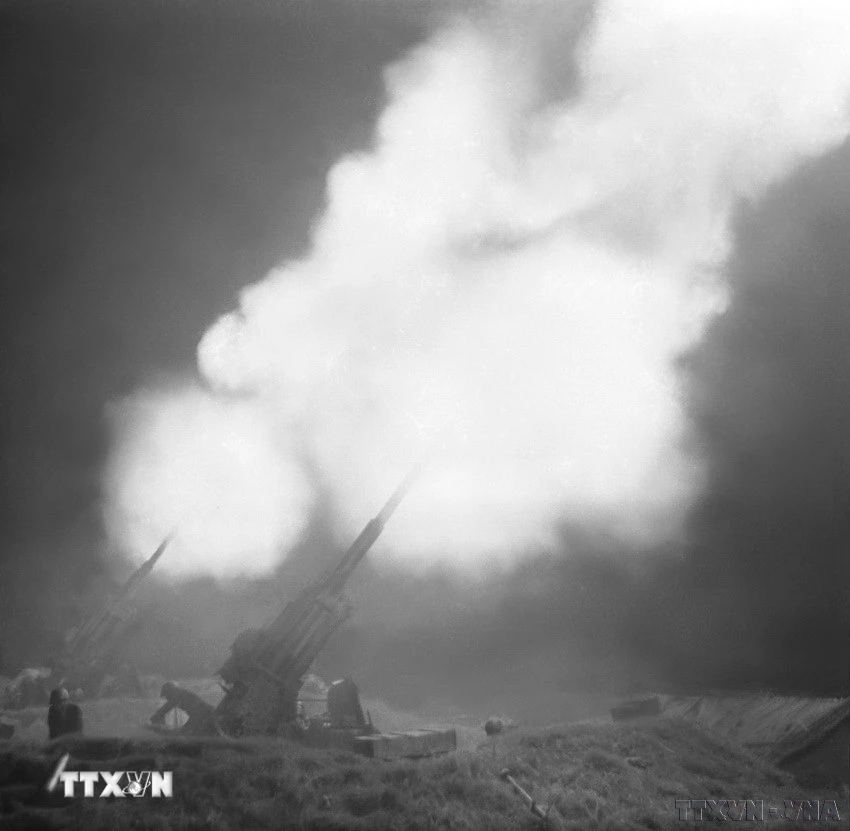

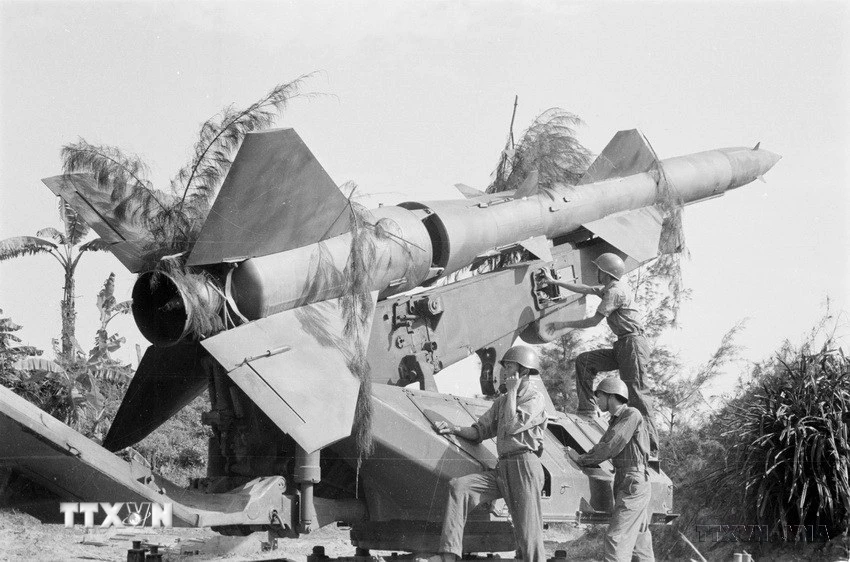
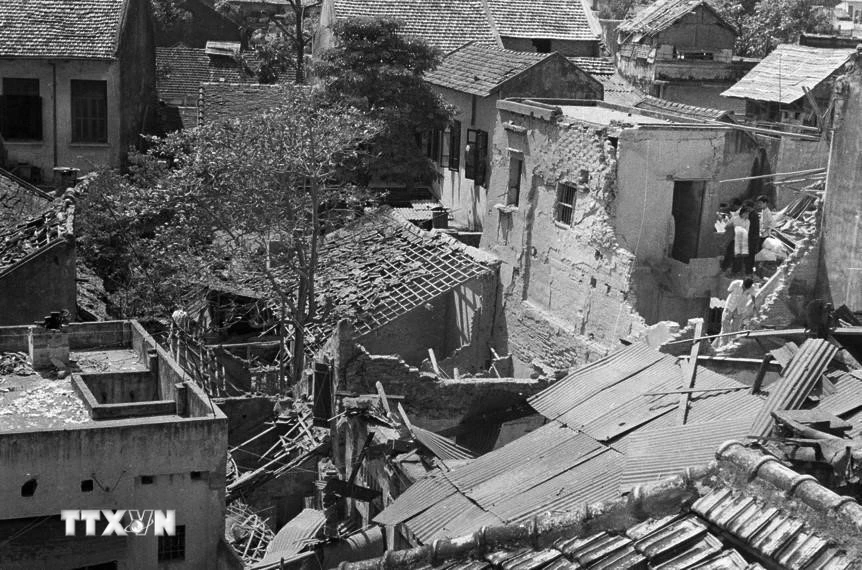




![[Photo] Deep sea sand deposits, ancient wooden ship An Bang faces the risk of being buried again](https://vphoto.vietnam.vn/thumb/1200x675/vietnam/resource/IMAGE/2025/11/13/1763033175715_ndo_br_thuyen-1-jpg.webp)




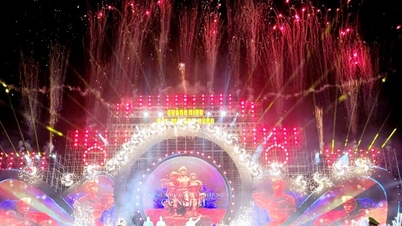

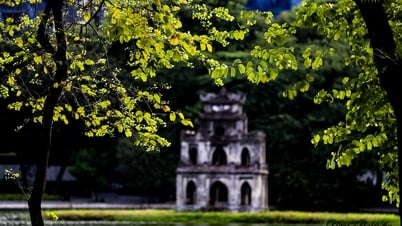

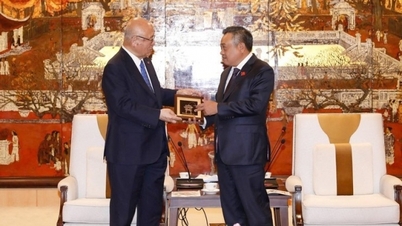





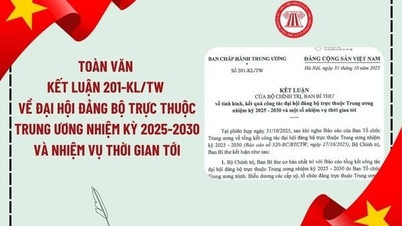


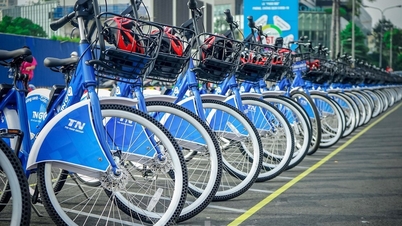


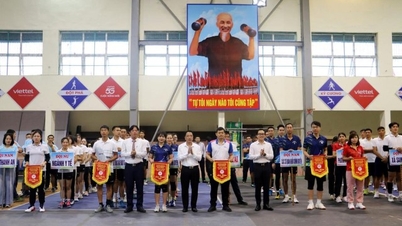






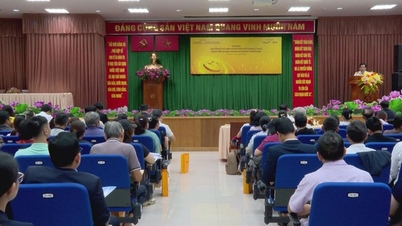



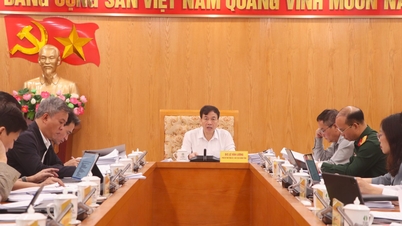

































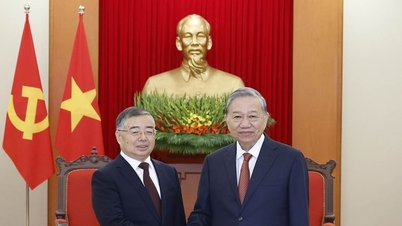
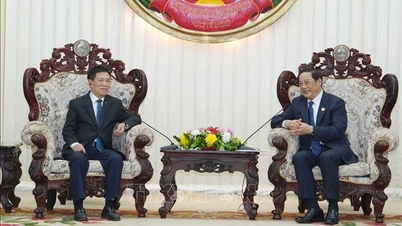


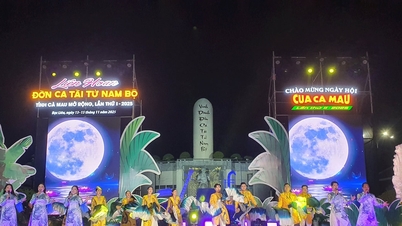






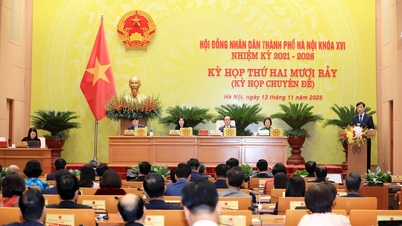



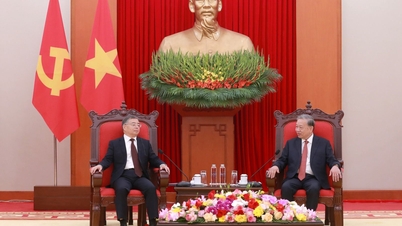





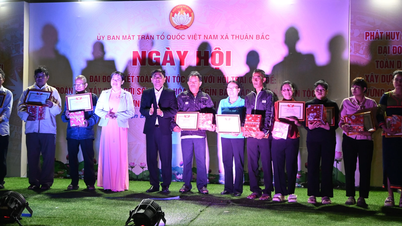

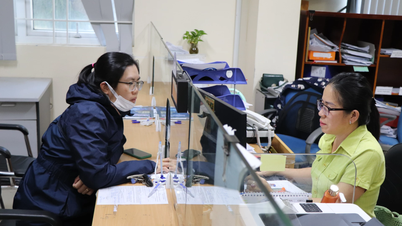





![Dong Nai OCOP transition: [Article 3] Linking tourism with OCOP product consumption](https://vphoto.vietnam.vn/thumb/402x226/vietnam/resource/IMAGE/2025/11/10/1762739199309_1324-2740-7_n-162543_981.jpeg)




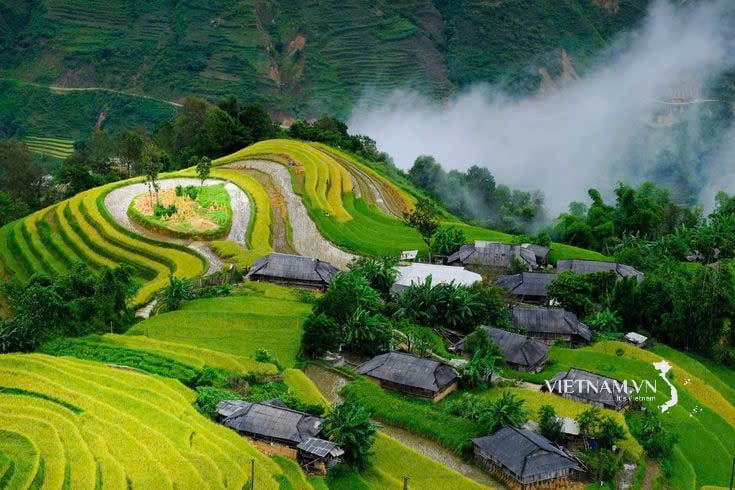
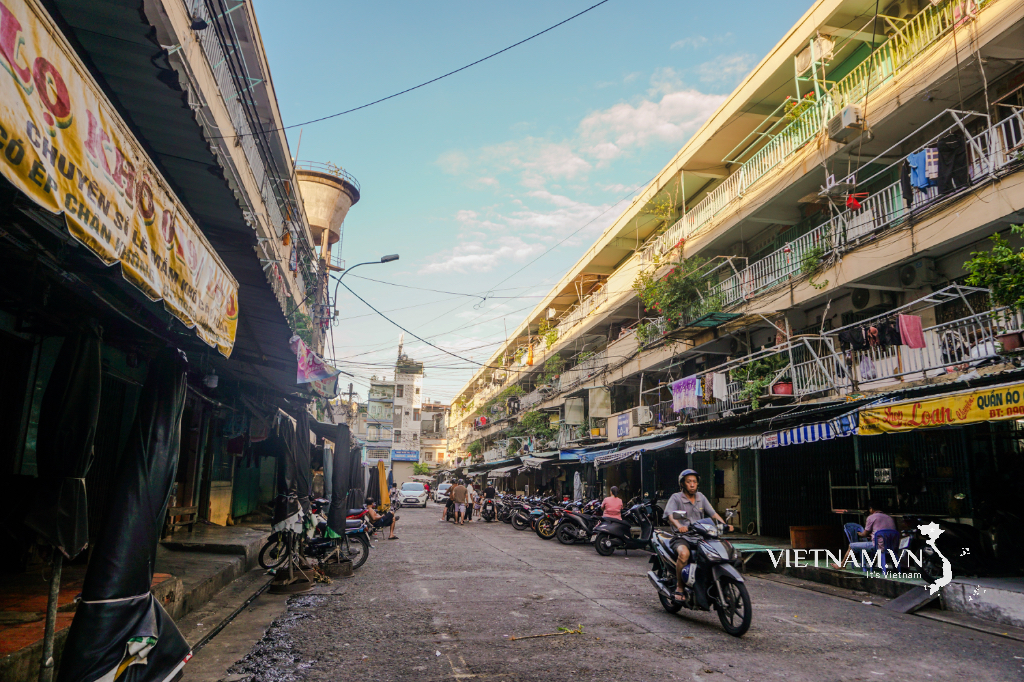

Comment (0)